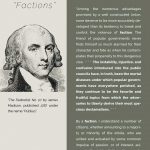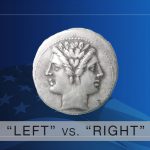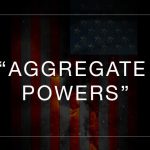Last Updated on October 3, 2021 by Constitutional Militia
Support for the Confederate States Army in the field was, of course, a treasonous activity, explicitly so defined by the Constitution.[33] The fundamental point, though, is not that such support was specifically “Treason”, but that it was a violation of the Constitution. “Treason” is a crime only because the Constitution makes it so. But every unconstitutional act into which rogue public officials enter knowingly and willfully, or with reckless disregard for the consequences, or in willful blindness to the truth, is also a crime, because various statutes so declare.[34] And if those rogue officials or their myrmidons then accost WE THE PEOPLE with arms, in order to collect the money to pay for their illegal acts, their assaults amount to no less than “Treason”. For every unconstitutional act on the part of rogue public officials constitutes a “combination to overthrow th[e] government”, in the sense of setting aside the Constitution, at least in part; and every attempt forcibly to compel obedience from WE THE PEOPLE through the deployment of “law-enforcement agencies” constitutes “an armed combination to overthrow th[e] government”. So any loan for which any part of the consideration is the performance of an act that is a violation of the Constitution is “void in toto”.
Thus,
• If X is less than D, then each bond, note, or other evidence of obligation that makes up the total debt is declared null and void to the extent of X/D times its face value. This relieves the taxpayers of any liability to repay this amount of debt.
• If X is equal to D, then the total debt is declared null and void. This relieves the taxpayers of any liability to repay any of the debt. And,
• If X is greater than D, then the total debt is declared null and void, and a credit to the extent of (X – D)/T times the tax paid by each taxpayer for the year in question is to be applied to the taxpayer’s next year’s tax. This relieves the taxpayers of any liability to repay any of the debt, and refunds to them the excessive taxes that they paid.
This calculation may become arithmetically more complicated if some expenditures for a particular year are for service of debts incurred in relation to budgets of previous years. But the same principle applies. A further complication is that some public debt will have to be excluded from the calculation altogether on equitable grounds. For example, the Social Security System’s so- called “trust fund” has been compelled to “invest” its receipts in public debt. In equity, then, that portion of the debt cannot be liquidated, except to the extent that the Social Security payments it finances can themselves be constitutionally reduced or even cancelled.[35]
Notice that, through this procedure, invalid “public debt” is not “repudiated”; it is not “nullified”; it is not “cancelled”; it is not even “dishonored”—rather, it is recognized as never having come into legal existence in the first place. Neither can it be said that invalid “public debt” is left unpaid. No debt is ever “unpayable” in principle. And all debts are always paid in practice: if not by the debtor, then by the creditor, or by some third party surety or guarantor. The only question is, “Who pays what?”
Were this procedure applied today, financial speculators would lose their enthusiasm for buying public debt, unless they were legally assured that whatever part of the General Government’s budget that debt financed was completely constitutional. Astute lenders would purchase only public debt that was explicitly tied to specific expenditures for specific programs, the legality of which could easily be assessed. Even then, they would likely demand official “certificates of constitutionality” for any program that could not be fully justified on the very face of the Constitution. As any such certificates coming from Congress or the Executive would be merely indicative, but not dispositive, without a judicial determination—which would require at least some sort of formal declaratory judgment on the matter—uncertainty would discourage any but the hardiest lenders from risking their capital on any loan that had the least taint of unconstitutionality attached to it.
The States should take the lead in the process of identifying those portions of the budget (and derivatively of the public debt) that are illegal, if only to reassert their authority under the Tenth Amendment. After all, in order to begin to enforce that Amendment, Americans need to become clear on what “powers [are] not delegated to the United States by the Constitution”, but “are reserved to the States respectively, or to the people”. Inasmuch as no one can reasonably expect officials of the General Government to investigate, educate, and mobilize the people on this subject, the task devolves upon the States.
B. This still leaves the legitimate part of the existing debt. And that is no small amount, by any means. It can be reduced, though, (i) by exercising the General Government’s reserved right to cancel certain contingent liabilities, (ii) by liquidating the assets that the government can best spare, and (iii) by raising some additional revenue.
The rather piquant irony is that Americans can both combine reduction of the public debt with separation of bank and state, and turn the present fiat-currency system, which the speculators and politicians created in order to increase the public debt, into the means to eliminate it.
1. The first step in resolving this problem will be to repeal the provision of law that requires the Treasury to redeem Federal Reserve Notes for “lawful money”[36]—thus beginning the separation of bank and state by imposing the entire burden for redemption on the Federal Reserve regional banks alone, where in economic rationality and justice it belongs. This reform can be accomplished simply by statute, and immediately, under the aegis of Section 30 of the original Federal Reserve Act, in which Congress “expressly reserved” “[t]he right to amend, alter, or repeal th[at] Act” at any time, in any particular, and for any reason.[37]
2. The second step in dealing with the legitimate portion of the existing public debt requires one to understand that, today, all public debt is payable in only notional “dollars”. Notice, I did not say merely “nominal”, but instead notional, “dollars”—because under Congressional practices and the Supreme Court’s precedents, the “dollar” is anything that Congress says it is. As a matter of this body of supposed law, the understanding when public debts are contracted is that the plenary power of Congress is then and thereafter always to be read into the word “dollar”.
In addition—again, under Congressional practices and the Supreme Court’s precedents—Congress may make anything a “legal tender” for a “dollar”. For instance, Congress can declare that a contract originally payable in some number of gold or silver “dollars” can be paid instead with pieces of paper labeled “legal tender”. As a matter of this body of supposed law, the understanding when public debts are contracted is that the plenary power of Congress to declare things “legal tender” for “dollars” is then and thereafter always to be applicable to any debt denominated in “dollars”.
Moreover, according to its own practices and the Judiciary’s precedents, Congress can “regulate the Value” of an ounce of coined gold at a nominal “$50”, and an ounce of coined silver at a nominal “$1”, and a base-metallic coin at a nominal “$1”, and a piece of paper at a nominal “$50” or a nominal “$1” or any other nominal value it chooses. And no one can legally complain that the purchasing power (say) of the pieces of paper or the base-metallic coins with an aggregate nominal value of “$50” is nowhere near the purchasing power of fifty one-ounce silver coins, let alone a one- ounce gold coin.[38]
(Of course, I do not concede that any of these practices or precedents are in any way constitutional. But, in the present crisis, I am willing to seize upon the old adage that “it takes a crooked stick to beat a mad dog”.)
Now, it was said of John Law that he tried to “coin the soil of France”. But John Law’s monetary powers were next to nothing compared to those that Congress, with the Supreme Court’s approbation, claims to exercise today. So, if Congress can declare anything to be a “dollar”, and to be “legal tender” for a “dollar”, and to be taken at whatever monetary value it so chooses, why cannot Congress also declare that some area of the public lands shall be a “dollar” or “legal tender” for a “dollar” specifically for and in payment of the public debt, “dollar for dollar”, and for no other purpose—and thus “coin the soil” of the United States?[39] Certainly, such action falls within the explicit constitutional powers of Congress “to dispose of * * * the Territory or other Property belonging to the United States”; and within the putative power “[t]o * * * regulate the Value [of Money]” any old way,[40] and to declare “legal tender”, which powers, although they lack any constitutional basis, Congress and the Supreme Court nevertheless say that Congress enjoys. And no relevant statute precludes such action.[41]
This method of paying off the public debt would be triply beneficial:
First, it could eliminate a very large portion, if not the entirety, of the debt all at once—because the new “public-debt-reduction dollar” can consist of any area of land that Congress might choose to stipulate. No need exists for Congress to establish that the unit of payment in land be equivalent in value, according to some external standard, to any other “dollar” in circulation when the debt was incurred, or when it is paid.[42] Indeed, because the “dollar” is today purely notional, no such standard can possible exist. Rather, the unit of land designated as the “dollar” for the specific purpose of paying off the public debt must itself constitute the only standard of monetary value applicable to that transaction, because so defined by Congressional edict.
Second, this method of paying off the public debt would liquidate the vast holdings of territory for which the United States lack any constitutional sanction, and return ownership, use, and regulatory authority over these lands to the States and private parties, where they belong.[43] The sudden increase in the real wealth of the States and their people would significantly mitigate the present economic doldrums in which they find themselves, and augur well for future economic prosperity and growth.
Third. both the lenders and the borrower (the General Government) would find the transaction advantageous. The General Government, of course, would benefit, because its debt would be more or less eliminated, and because the elimination of the debt would relieve a great deal of the pressure now being exerted on the Federal Reserve System and the Treasury which, if not somehow vented, is likely to cause an hyperinflationary explosion of the System’s paper currency, with Heaven know what terrible consequences. The lenders would approve, too, because they would receive real value in land for their bonds right now, instead of grossly depreciated paper “dollars” that almost certainly would be worth next to nothing when finally paid.
To be sure, the initial practical problem in effectuating this proposal will be that the unit of land designated as the “dollar” exclusively for the purpose of paying off the public debt will be, not only quite small in size, but also not localized in any particular place. Rather, each unit will comprise a very small fraction of—as the lawyers say, “an undivided interest in”—the total public lands available for distribution. So a mechanism will need to be created to regulate a market for trading these new “land-unit dollars”, in order to pass particular areas of the available territory into private control. Also, careful regulation will be necessary so that, although many of the “land-unit dollars” may initially have to be paid out to foreign interests, none of the territory shall come or remain under foreign control when final allocation, division, and disposition of the land takes place.
3. If, for legitimate strategic reasons, distribution of the entirety of the public lands is deemed undesirable for sufficient constitutional reasons,[44] then what remains of the public debt should be paid off with specially targeted taxes, including:
a. A confiscatory “Excise[ ]” on all nonproductive “financial transactions”, such as “credit default swaps” and other speculative gambling contracts, both when they are entered into and when they are paid off.[45] “[T]he power to tax involves the power to destroy”.[46] And in this case, rightly so.
b. A non-apportioned tax on the possession of certain types of non-productive assets held for personal consumption and use.[47]
c. A complex of “Taxes, Duties, [and] Imposts” aimed at curbing all manifestations of “globalism” and “the new world order” that are detrimental to the national independence, sovereignty, and security of the United States.[48] At the minimum, every job transferred from an American to some foreign worker, every unit of capital exported for overseas investment, and every product of strategic value imported into this country, when it could (and should) be produced in this country, should result in a significant tax being imposed on the enterprise or persons responsible.
d. A “Dut[y]” on all goods imported from Mexico (and, to be fair, from Canada, too), calculated on the basis of the costs of apprehending and deporting illegal aliens who have crossed into the United States across the Mexican (or the Canadian) border.
C. After the public debt is thus radically reduced, the General Government should be required to finance itself largely on a “pay as you go” basis, through taxation. After all, if the money is there to be borrowed, it is there to be taxed. (If it is not already there—and subject to taxation—then what is its source?) Of course, foreign money that might be available to be borrowed may not be taxable. But because “the borrower is servant to the lender”, the government should not be to any significant degree dependent upon foreign money in the first place. Foreign loans inevitably create political entanglements, subjecting the government to financial pressures applied for alien political ends always detrimental to America’s rational self-interest.
“Pay as you go” will return control of the government to the people. For taxpayers will simply refuse to “pay the freight” for governmental programs that are either unnecessary or wasteful— and will so instruct their representatives. Or, if their representatives prove recalcitrant, the people will remove them from office.
D. The practical question then becomes, “Who will come forward to bell this cat?”
Self-evidently, the necessary reforms will not come from any in or aspiring to Congress, at least not without pulling a mouthful of political teeth. So WE THE PEOPLE must turn to the States. The first step must be the formation of a “blue-ribbon” investigatory commission, formed initially by one or a few far-sighted State legislatures, to determine and widely publicize the percentage of the General Governments’s expenditures (and therefore its debt) that is arguably illegitimate, and to explain how the legitimate portion can be paid off in whole or in large measure through “coining” the public lands. With these data and recommendations in hand, the States would then admonish the General Government that, if suitable reforms were not implemented immediately in Washington, the States would take direct action themselves.
Precisely what that action would be, I must leave for another day.
©2012 Edwin Vieira, Jr. – All Rights Reserved.



































